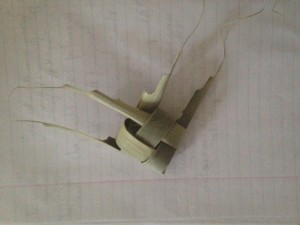“So a week before Easter–before and on Palm Sunday–we got to the church and bless willow branches. We tap the branches on each member of the family, and say, ‘the branch is hitting you, not me, and a week from today is Easter.’ After this, the willow branches are placed over the icons in the household.”
Context: The informant, TH, is a second-generation Ukrainian-American living in Rhode Island. She lives with her parents, along with her maternal grandparents. TH and I were discussing her Easter plans for this year, and she brought up how she had to go to church one week before the actual Easter date. I asked her why she was going to church, and she explained her Palm Sunday tradition that her and her family partake in. For TH, this ritual has importance because it is a very particular and specific religious custom that her family participates in, and they have been doing it for as long as she can remember. The tradition was also a fun one according to TH due to the fact that she and her siblings would chase each other around their house and hit each other with the branches, much to their parents’ chagrin.
Analysis: Religious traditions vary among various different groups and factions within each religion. Not every Christian participates in the same particular traditions that pertain to each major holiday, though most Christians do partake in Easter celebrations. For example, the act of blessing willow branches and placing them over the icons in the house is not something that Roman Catholics would partake in, but rather is quite specific to Eastern European Orthodox observers. There is a very important reason for this disparity between how Christians celebrate Palm Sunday in western Europe or the Middle East and eastern European factions will celebrate the holiday. Palm Sunday is supposed to mark the day that Jesus Christ, the son of God, returns to Jerusalem to celebrate Passover following his visit to Bethany–at least this is how it was written in the Bible. Upon his return, Jesus’s apostles and supporters laid their cloaks and palm branches down to show their faith. Palm Sunday celebrations around the world usually involve blessing palm branches and building crucifixes out of the plant to commemorate the triumphant return of Jesus Christ. However, in Eastern Europe, it is difficult to obtain palm branches so far north, so the tradition was altered slightly, by replacing palm branches with willow, or more specifically pussy willow. This plant is endemic to northern Europe, so it was easier to use it.
Another important aspect of this religious tradition is the way that children remember the tradition. For TH, the tradition was less about the religious significance–while that was important–but more about the memories she had involving the custom. It was something fun that she and her sibling would look forward to and it brought them joy during a strictly religious and stoic festival.

